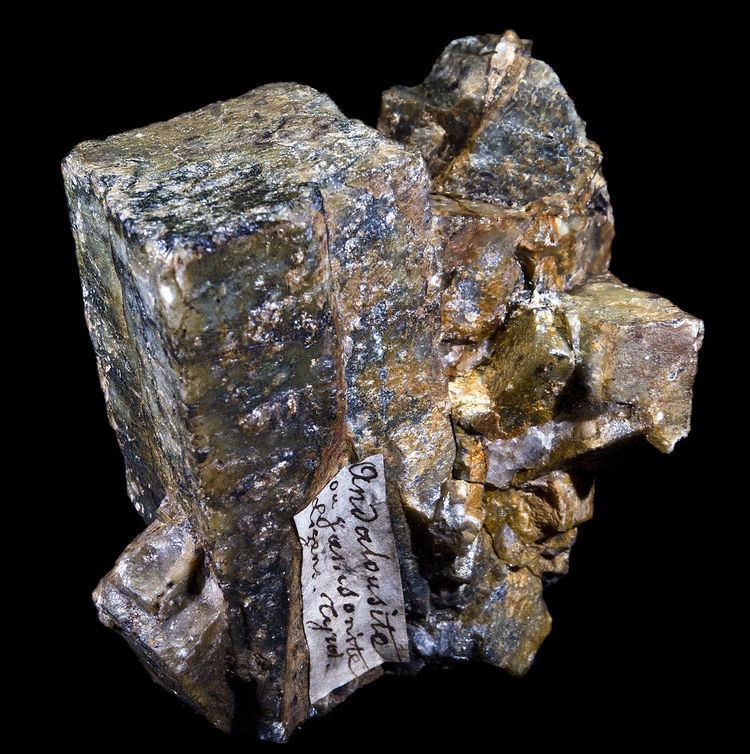Category Nesosilicates Strunz classification 9.AF.10 Space group Pnnm | Formula(repeating unit) Al2SiO5 Crystal system Orthorhombic | |
 | ||
Crystal class Dipyramidal (mmm)H-M symbol: (2/m 2/m 2/m) | ||
Andalusite is an aluminium nesosilicate mineral with the chemical formula Al2SiO5. Andalusite is trimorphic with kyanite and sillimanite, being the lower pressure mid temperature polymorph. At higher temperatures and pressures, andalusite may convert to sillimanite. Thus, as with its other polymorphs, andalusite is an aluminosilicate index mineral, providing clues to depth and pressures involved in producing the host rock.
Contents
Varieties
The variety chiastolite commonly contains dark inclusions of carbon or clay which form a cruciform pattern when shown in cross-section.
A clear variety first found in Andalusia, Spain can be cut into a gemstone. Faceted andalusite stones give a play of red, green, and yellow colors that resembles a muted form of iridescence, although the colors are actually the result of unusually strong pleochroism.
It is associated with mica schist which increases alkali content in ultimate product and so it has not been exploited economically so far.
Andalusite is an aluminium compound with high heat resistance used in furnaces, kilns and other industrial processes. South Africa possesses by far the largest portion of the world’s known andalusite deposits.
Occurrence
Andalusite is a common metamorphic mineral which forms under low pressure and low to high temperatures. The minerals kyanite and sillimanite are polymorphs of andalusite, each occurring under different temperature-pressure regimes and are therefore rarely found together in the same rock. Because of this the three minerals are a useful tool to help identify the pressure-temperature paths of the host rock in which they are found. An example rock includes hornfels.
It was first described and named after the type locality in the Ronda Massif, Málaga, Andalusia, Spain in 1789.
